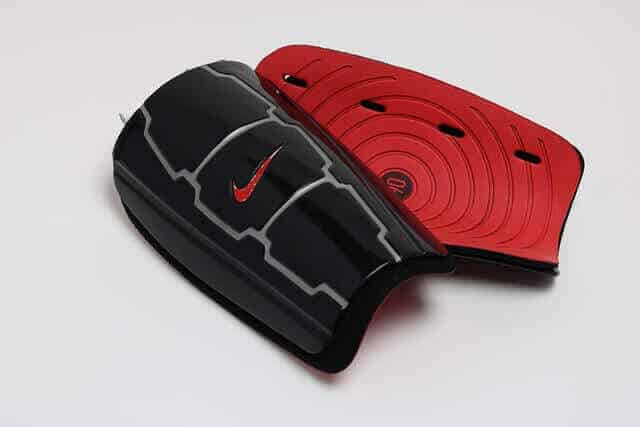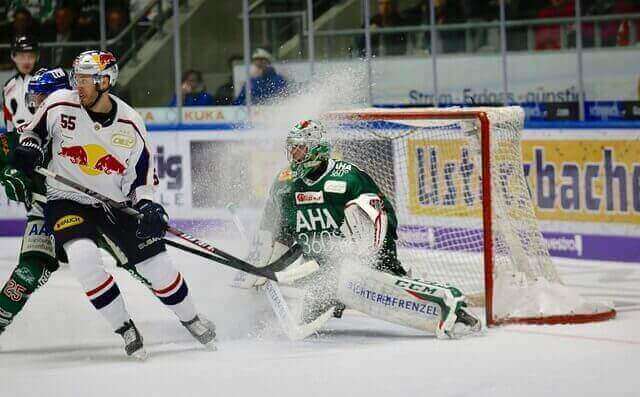
Injuries are a normal part of playing any physical sport. And in Field Hockey, you can’t avoid physical contact, so you must wear protective gear. Shin guards are strongly encouraged by the game’s official rules. Playing a competitive match without shin guards would not be very reasonable.
During a field hockey game, your shins are the most vulnerable part of your body and should be covered accordingly. And athletes wear it to protect their lower legs. You can extend your athletic career with the appropriate shin guards and the right way to wear them.
In this article, we have discussed how to wear field hockey shin guards. Using these guidelines, you can maximize your shin guards’ protective potential. Read this so you can protect your legs properly.
Importance of Shin Guards
Table of Contents
The importance of field hockey shin guards, even though they are not required equipment, should be evident to anyone who has played, or watched, a hockey game.
Shin guards are an absolute must as a hockey ball is extremely hard and can be raised to shin height easily. It can do significant damage to an unprotected leg if hit hard enough.
Considering the risk of getting hit by an opponent’s stick, it’s easy to see why shin protection is so important in field hockey.
Do Field Hockey Players Wear Shin Guards?
Shin guards are a need when playing field hockey. A shin injury is a typical incident among field hockey players.
One of the worst injuries an athlete may have is shin splints. Most of the damage will occur while the game is in progress. And the protective gear — shin guards for field hockey — can lessen the risk of having this medical emergency. If you wore shin protectors during the collision, you might not have suffered any shin pain.
A quality set of shin guards will fit on your legs and won’t let any skin show through. Your shin guards, meanwhile, should be well-fitted to your body. If your shin guards don’t fit properly, you won’t be able to move freely or feel comfortable.
You should pick a shin guard for field hockey that fits tightly, and while many of them are adjustable, you should find one that fits you well.
How Should A Shin Guard Fit?

Shin guards aren’t like shoes; they come in small, medium, and large sizes. But they don’t have to fit perfectly from point to point to work. To fit correctly, find that bump right below your knee. A shin guard’s top should rest about an inch lower than that. The bottom should stop a couple of inches above the ankle. The shin guard mustn’t stop the knee or ankle from moving freely.
How To Wear Field Hockey Shin Guards
Below are the steps to wearing field hockey shin guards
- Put on the shin guards by slipping them over your ankle and up your shin.
- Place them in the middle of your shin rather than to the side. They need to offer protection from your ankles to just below your knees. First, double-check that they are in the correct spot.
- After that, ensure that the buckles are correctly locked. Straps at the top of most shin guards help you keep the guard in place on your leg. Ensure the shin guard is tight enough to prevent it from moving but not so tight that blood circulation is blocked. If they cause itching, swelling, numbness, or discoloration in your foot, then your shin guards are probably too close. Get them off immediately if you don’t want to lose a leg.
- Stick some tape on your shin guards to stay in place. Slip-in shin guards do not have straps; thus, you must tape the ends to keep them in place. Use athletic tape to join the top and bottom of your shin guards. Put some pressure on them and ensure they’re firmly attached to your leg.
- Cover the shin guards with a sock. Socks not only hide the shin guards but also aid in keeping them in place. You need a sock that fits closely without being too restrictive on your leg. Make sure your socks fit comfortably by pulling them up to the top. Roll down any excess material above the knee to tighten the fit of your shin guards. That’s how you wear your shin guards.
FAQ
How Are Field Hockey Shin Guards Supposed To Fit?
Wearing the shin guards over socks ensures a tight and secure fit while also protecting the lower leg and ankle. Fold the sock top down over the shin pads. Put on a second pair of hockey socks over the shin guards and tuck the tops of these socks under the shin guards and the first pair.
How Do You Wear Hard Field Hockey Shin Guards?
First, put on a thin pair of socks or inner shin guards to protect your legs and soak up any moisture. Then wear shin guards over thin socks or inside shin guard socks. Adjust the shin guards by slipping your socks over the top of them. After that, put on field hockey shoes and adjust as needed.
Do Field Hockey Players Wear Shin Guards?
Shin guards for field hockey are composed of plastic and foam, covering a larger portion of the lower leg and ankle than soccer shin guards. Some athletes like to wear thin socks below their shin guards to improve comfort.
Which Way Do Hockey Shin Pads Go?
Place them in the middle of your shin rather than to the side. You must protect your entire leg, from the shin to the knee. The padded parts of your shin guards must reach down and cover the bony areas on both sides of your ankle. Make sure your shin guards are in the right place before moving on.
Conclusion
For safety, the player must wear field hockey and shin guards. It will protect them to stay safe on the field. They keep the ball from hitting your shins and getting bruised or cut. It’s vital to pick the right pair of shin guards for your needs, as they come in a wide range of sizes.
And with the article ” How To Wear Field Hockey Shin Guards ” will help you stay away from injury if you follow the steps correctly.